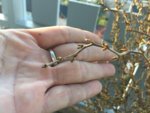I always try to leave as many roots/foliage mass as I can when collecting. I've never lost a tree when collecting. Can't say what the survival rate would be for trunk chop + massive root reduction all on one day, but I bet it's less than 100%
you'd be VERY VERY wrong. Of course this depends on species, but most deciduous trees respond very well to it. Ask some professional eastern collectors about how they collect stuff.
https://bonsai-south.com/craftsmanship/hornbeam-craftsmanship-2/
https://bonsai-south.com/craftsmanship/cedar-elm-craftsmanship/
https://bonsai-south.com/craftsmanship/bald-cypress-craftsmanship/
Zach Smith, who has been collecting for well over 25 years now, does this treatment with many species, including elms hawthorns and other stuff. I know for a fact his collection tools for cedar elm involves only a battery powered reciprocating saw and a strong son...He uses the saw to cut through a circle two or three inches out from the trunk all the way around the tree and removes all the field soil. His son is there to rock the tree back and forth to break big tap roots and leverage the tree so Zach can cut under it. If there are a couple of feeder roots left that's great, but they really aren't completely necessary. He then chops 15-20 feet of the top off leaving what is pictured.
I can say I use this same technique on Carolina hornbeam, cedar elm, blackhaw, wisteria, hackberry, beech (in some cases), bald cypress, bittersweet and a few other species.
He, and I, have had better than a 95 percent success rate over the years using this method.
BTW, if you haven't lost a collected tree, you probably haven't collected more than a dozen, or you're collecting seedlings or saplings less than an inch in diameter. Nothing wrong with that, but it's not that complicated to get a lot of roots with those...


